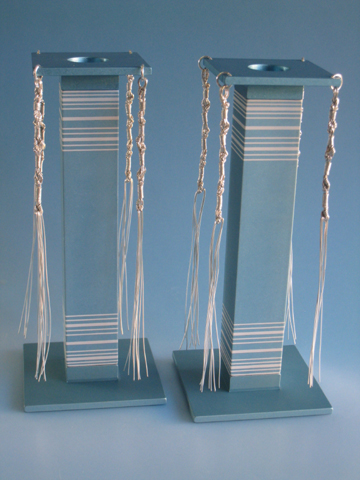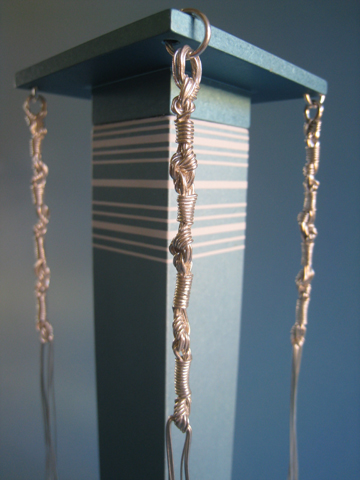
(Shabbat candles holders)
"You shall make the robe of the ephod of pure blue..." (Exodus 28, 31)
"...Instruct them to make for themselves fringes on the corners of their garments throughout the ages, let them attach a cord of blue to the fringe at each corner." (Numbers 15, 38)
"Blue is like sea, Sea is like sky, Sky is like the Throne of the Lord" (Sota 17B).

Copyright © 2011 by Avi Biran
The Tallit (also pronounced Tallis) is a prayer shawl, the most authentic Jewish garment. It is a rectangular-shaped piece with special fringes called Tzitzit on each of the four corners. The purpose of the garment is to hold the Tzitzit. The Tallit can be used as a Chuppah as the canopy under which a Jewish couple stand during their wedding ceremony. A Chuppah symbolizes the home that the couple will build together. The design is combining the couple, a man and a woman, together with the Shabbat candles as a family at their home. Light blue (Tekhelet) Tallit is a symbol for purity without a spot.

Sterling Silver, Anodized Aluminum
3" x 3" x 7" (Each)
$1,200
Shabbat table | Passover | Hanukah | Purim | Other Holidays | Family | Home use | Synagogue | Amulets | Main Gallery | Home page | Write Us